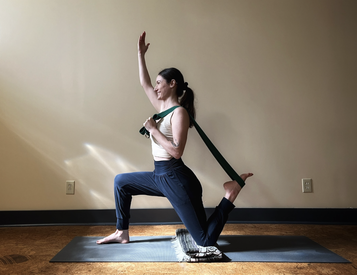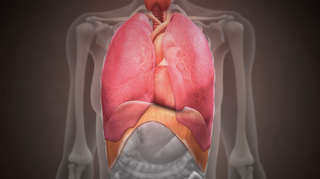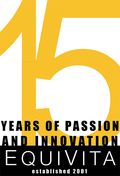While this may not seem obvious, this is a very different way to view the human body and our treatments for our health than those of the more known perspective of homeostasis. With homeostasis, the goal of the body is to maintain the known or current status. And while this seems to make sense of the body’s actions, it doesn’t actually fit with the body’s adaptable nature.
Consider how the body will increase muscle when continually challenged with exercise. With a homeostasis goal the body would resist such change, and it does. However, we can also view this resistance to change as a need for maximum efficiency since adding muscle is calorically expensive and, thus, not very efficient. So, both could fit and we need to go further. What happens when we stop the exercise that had the body add muscle? As we all know, the body will start to lose muscle. This is not maintaining homeostasis, it is adapting toward greater efficiency. If we don’t use it, we lose it. This is not just a saying related to muscle or even to all physical adaptations from exercise, this is true for the entire body and brain. Lack of demonstrating a need or use and the associated loss could be seen as the body’s shedding unnecessary functions. However, you could also view this same adaptation as the body adapting more specifically to become better at what it is being asked - even if that is sitting on a couch.
With the understanding that your body is adapting to whatever you ask of it, the next question might be related to when the body takes the time to focus on the adaptation. And the time that the body has set aside to heal, recover and prepare for similar future demands is during Rest.
The same challenge-recovery-prepare cycle that is true for something like resistance training, an area where it is easy to see, is true for every area of each of us; Physical, Mental, Emotional, Spiritual and Social. Resting is how we become better and to make our resting effective we have to be conscientious in the challenge aspect. With considerate, thoughtful dosing of challenge we can ensure that the adaptations we are making are in the direction that we desire. The question is never about whether you are adapting, because that is always happening. The question is whether you are adapting intentionally.
As always, let me know how I can help.
Adam
There are movement practices, rooted in older movement disciplines, that make everyday
breathing a tool of influence over our entire body. In studies that sample the hormones
associated with stress and recovery, we can see that breathing can influence both. In the end of my previous piece on the properties of exercise that support the health of your fascia, I was excited to address ways to assist you with learning how breath and brace can lead to the release of our fascia.
Here’s what I find tough about breath...if you’re alive, you’re breathing, so it’s tough to prioritize something that’s essential whether you do it with intention or not. Hence the ability to connect with the subtle; breathing happens the minute you arrive on this planet, it is seamless (hopefully), and thus it can be harder to connect with dysfunction or less effective breath behaviors.
Sometimes to help us realize the impact of the more subtle (or autonomic) functions of the body, it’s helpful to be reminded of how they influence the body when used in extreme body scenarios. Lamaz has been used to help women shift the sensations of childbirth and keep the body most conducive to the process of birthing. The breath practice designed to control an attack of tachycardia is another example. Additionally, intentional breath practices have become recognized as legitimate by psychiatrists for panic attack support.
Something to consider: if we wish for these strategies to be effective in acute moments, the body likely needs to have practiced them beforehand for them to be most influential. For instance, imagine you’d taken one sailing lesson, it would hardly be reasonable to expect that you would easily navigate a boat out of a storm on the ocean. As with so much of what we offer at EQUIVITA, practice and being in the process are important.
Carla plays a big role in my awareness of this concept and work. So we teamed up to create an introduction to breath work that aims to help you witness the breath, assess the state of tension in your abdominal area, and then your ability to soften/dissipate tension where you find it.
Breath Awareness & Three Part Breath Video with Tami and Carla (11 mins)
https://us02web.zoom.us/rec/share/aUUmmmbNCa8ndvzwb7T7izVHVtlU5dzB4xHOQZ4Vi5IGnrXILl1_1uwJVdF8us00.xlQ-p33GD38Yvt71

The diaphragm is a muscle nestled up under your lungs--by design. When the diaphragm contracts and relaxes, with the help of the intercostals (muscles between the ribs), it causes air to move in and out of the lungs.
As the "motor muscle of breath, it can be automatic, forced, or controlled in its movement"; that makes it a rather unique motor muscle. The diaphragm also has both local and global effects on the functions of your body systems: directly it affects breath, but breath influences our body systems in ways we are only recently able to understand and explain. If you will note the red line added between the lungs and the diaphragm represents the phrenic nerve, and the blue line represents the vagus nerve. These two nerves influence a host of shift in things like cortisol production, insulin production, O2 absorption in the blood, lymph system movement, cues to digestion--to name but a few of the systems influenced by the activity that can be impacted by your connection to your respiratory motor muscle, the diaphragm.
Posture that supports your ability to provide your body the space and ease to breathe, combined with your ability to connect with how it feels to engage a variety of controlled breathing techniques with your own diaphragm, give you an edge in robust living!
In the next digest on the diaphragm we will look at how your body posture can both positively and negatively influence various aspects of you in your body (think feeling tight all over, think feeling anxious, think feeling puffy, think feeling rested...for examples).
Tami
Fascia is an important part of the structure of the body. It covers every part, “creating a structural continuity that gives form and function to every tissue and organ. The fascial tissue has a ubiquitous distribution in the body system; it is able to wrap, interpenetrate, support, and form the bloodstream, bone tissue, meningeal tissue, organs, and skeletal muscles. The fascia creates different interdependent layers with several depths, from the skin to the periosteum, forming a three-dimensional mechano-metabolic structure” (Bordoni, Mahabadi, & Varacallo, 2020). The fascia is what allows the body to operate in an integrated manner; a web-like collective of individual systems that work within a community (the body), exchanging signals, and helping to ensure a sound structure as a whole. Fascia is the material that repairs the body: broken bones, torn muscles, wounds and cuts, and works to keep the body healthy inside and out. Keeping this "system" healthy is what helps keep the entire whole healthy.
The body is capable of movement because of fascia and its interconnectedness, allowing the sliding of the muscular structure, the nerves and vessels. If the fascial system is dysfunctional in any part of the body, especially when left unattended for long periods of time, it can begin to actually change the structure of the body. This happens because fascia is made up of collagen which, when experiencing abnormal lines of tension, builds hydrogen bonds. This buildup of collagen ends up holding you in those abnormal structures, making it even harder to correct. For instance, whether due to injury, damage, or improper every-day movement, the fascia can actually remodel the cellular/tissue structure, changing its shape and affecting function. This can result in physical manifestations such as postural alterations (i.e., slouching), issues with biomechanics (i.e., one’s gait), and overall function (i.e., simple, every-day movements like bending, reaching).
The fascia can form taut bands of tissue, lose elasticity and become painful when immobile for long periods of time. If the fascia is not cared for like the other parts of the body, the body can experience chronic fatigue from the fascia becoming fibrotic and signals/chemicals/blood not flowing properly, chronic pain (especially when those connective tissues get dehydrated and inflamed), and could even cause an immune response which can lead to things like fibromyalgia.
It’s beneficial to the health of the body’s fascia to “work it out” so to speak. When massage is done post-workout, and regularly on rest days, it can aid the body in keeping the fascia malleable and fluid. The fascia is thixotropic in behavior (meaning it becomes more fluid when worked), so kneading, massage and foam rollers are all great ways to get the fluidity back (this is why it can feel like the body is more flexible and pliable right after a massage or active stretching). Keeping up on fascia health helps increase blood flow throughout the fascia (which can speed up recovery time), release any tension/tightness in the fascia that may cause pain, get the signals flowing better in the body, and relax the muscles, increasing flexibility. When the fascia is able to “rest”, and massage done regularly for it, it can heal the body quicker, and keep the body healthier (essentially, it can actually do its job!).
Rest doesn't mean immobility. Even during days of rest it is vital to keep the body fluid and the fascia loose. One easy way to do this is by using a foam roller. Rolling out the legs, while gently and slowly focusing on tight and achy spots (areas of buildup feel more painful initially), will work the fascia in order to prevent it from becoming taut on days when you don't do rigorous exercise. By keeping up with the fascia on rest days, the fascia can more easily progress (working to increase fluidity, flexibility, and flow), instead of regressing from periods of stagnation.
Best,
Katherine


 RSS Feed
RSS Feed
